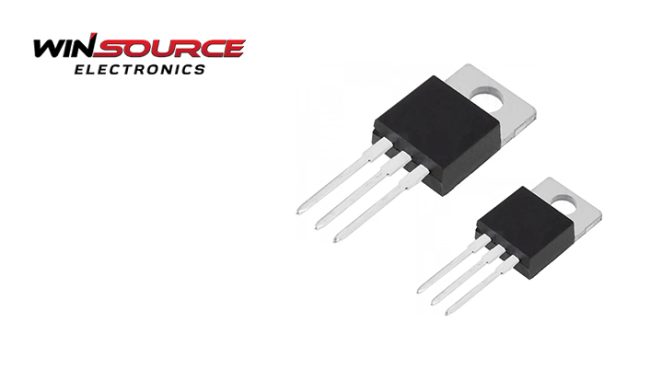
The 25H Metal-Oxide-Semiconductor (MOS) transistor is a key component in modern electronic devices, playing a crucial role in digital integrated circuits.
The “25H” designation refers to the specific process technology used in its fabrication.
Let’s delve into the characteristics and significance of the 25H MOS transistor with our WIN SOURCE electronics wizards.
But let’s get the mini takeaway before we head into details.
The 25H MOS transistor is pivotal in the digital era, serving as a key component in electronic devices. Its role in facilitating efficient signal processing and data storage underscores its significance in advancing technology and shaping modern computing systems.
Ok, so now let’s take a look at this mini marvel in a little more detail.
Introduction to MOS Transistors
MOS transistors are fundamental building blocks in semiconductor technology.
They consist of a metal gate separated from the semiconductor material by a thin insulating layer, typically silicon dioxide.
Process Technology
The “25H” process technology represents a specific manufacturing process for creating MOS transistors.
The number “25” likely denotes the nanometer scale, indicating a technology node in the range of 25 nanometers.
Miniaturization and Performance
Smaller technology nodes, such as 25H, enable the fabrication of more transistors on a single chip.
This miniaturization contributes to increased computational power, improved energy efficiency, and enhanced performance in electronic devices.
Reduced Power Consumption
The 25H MOS transistor’s smaller size results in lower power consumption, making it well-suited for battery-powered devices and energy-efficient applications.
Integration Density
With a smaller footprint, the 25H MOS transistor allows for higher integration density on semiconductor wafers.
This paves the way for more complex and feature-rich integrated circuits.
Speed and Efficiency
Advances in process technology, like the 25H node, often lead to improvements in transistor switching speed, enhancing the overall efficiency of electronic systems.
Application in Digital Circuits
MOS transistors, including those based on the 25H process, are prevalent in digital circuits.
These help to form the backbone of microprocessors, memory chips, and other digital logic components.
Challenges of Advanced Nodes
While smaller technology nodes bring numerous benefits.
However, they can pose challenges, such as increased manufacturing complexity, thermal considerations, and potential issues related to quantum effects.
Quantum Effects and Reliability
At the 25H node and beyond, quantum effects start becoming more prominent, influencing the transistor’s behavior.
Engineers must carefully address these effects to ensure the reliability of electronic devices.
Advanced Materials
Beyond the reduced scale, the 25H MOS transistor benefits from advancements in materials science.
Researchers are continually exploring novel materials for the transistor components, such as high-k dielectrics for the insulating layer and alternative metals for the gate, to improve overall performance and reliability.
Quantum Tunneling Mitigation
At smaller scales, quantum tunneling becomes a significant concern.
Engineers working on the 25H MOS transistor employ sophisticated techniques and materials to mitigate quantum tunneling effects, ensuring stable and predictable transistor behavior.
Specialized Applications
The 25H MOS transistor is used in general-purpose digital circuits and specialized areas such as analog circuits, radio-frequency (RF) applications, and mixed-signal designs.
Its versatility makes it a cornerstone in various electronic systems.
Manufacturing Precision
Achieving the 25-nanometer scale demands extraordinary manufacturing precision.
Advanced lithography techniques, including extreme ultraviolet (EUV) lithography, play a pivotal role in etching intricate patterns on semiconductor wafers, creating finely detailed transistors.
Power-Efficient Devices
With a focus on power efficiency, the 25H MOS transistor contributes to developing energy-efficient devices.
This is particularly crucial in portable electronics, IoT devices, and electric vehicles, where minimizing power consumption directly impacts battery life and sustainability.
Integration Challenges
Engineers face challenges related to heat dissipation and interconnect complexity as integration density increases.
The 25H MOS transistor’s proximity to the chip necessitates innovative cooling solutions and efficient interconnect designs to maintain optimal performance.
System-on-Chip (SoC) Architectures
The 25H MOS transistor is integral to realizing System-on-Chip architectures, where diverse functions like processing, memory, and communication are integrated into a single chip.
This trend contributes to more compact and power-efficient electronic systems.
Security Considerations
In an era where cybersecurity is paramount, the 25H MOS transistor’s design and manufacturing processes also consider security aspects. Researchers focus on developing secure hardware implementations to protect against potential vulnerabilities and attacks.
Unveiling the Significance of the 25H MOS Transistor in the Digital Era – To End
In essence, the 25H MOS transistor goes beyond its numerical designation, representing technological, scientific, and economic convergence.
Its influence extends across various domains, shaping the trajectory of electronic devices and laying the groundwork for the next wave of technological advancements.
As research and development continue, we can anticipate further breakthroughs that will redefine the capabilities and applications of MOS transistors in the future.
Find all your quality electronic components in our store.
With a wealth of industry manufacturing leaders and our second-to-none quality policy. Download our brochure today and use WIN SOURCE as your trusted engineering partner.
© 2024 Win Source Electronics. All rights reserved. This content is protected by copyright and may not be reproduced, distributed, transmitted, cached or otherwise used, except with the prior written permission of Win Source Electronics.

COMMENTS